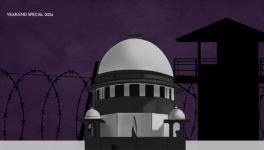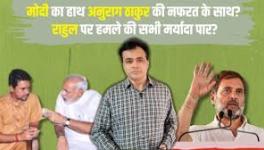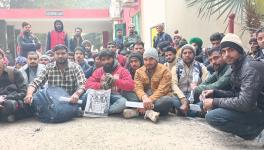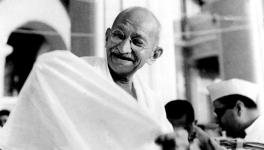What to Expect from What Remains of Modi’s Term
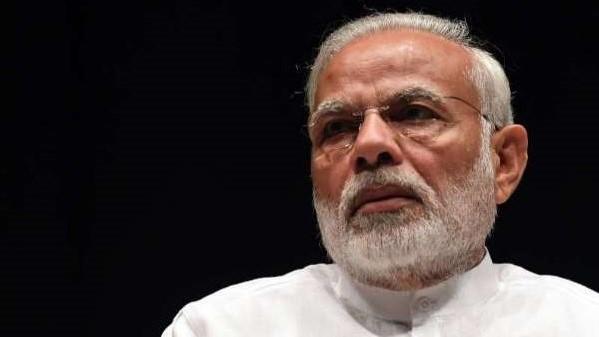
Narendra Modi completed one year of his second term as Prime Minister recently and ushered in the rest of his term with an open letter to citizens. In it, he has called for eschewing adversity. If anything, going by his past record, Modi does exactly the opposite of what he says. Further, given his credibility in some cultivated quarters this too might go down the same road. But what one can expect from the rest of his term is precisely what he termed adversity—more civic crisis, social conflict and a dwindling economy.
The mass adulation for Modi as the “sovereign dictator” has roots in what Alain Badiou identifies as the key feature of the twentieth century—a the “passion for the real”. Badiou argues that as against the utopia and scientific projects of the nineteenth century, we are now looking for direct realisation rather than plans for the future. In other words, there is an innate urge to directly experience the real and here the harshness of violence becomes a signifier for authenticity.
The endorsement of violence comes from a corporeal and visceral nature, but even our fantasies are more about a lost glory rather than a glorious future. Therefore, whatever needs to be achieved must be achieved in the here and now. Even Modi’s grandstanding on economic growth and development has given way to retributive reality more than hopeful aspirations. He began with an aspirational mood and that has given way to cynical reconcilement. In this way, anything beyond the real that is even remotely considered civil, polite, politically correct, and dissent, are dismissed as unreal, pretentious and inauthentic.
The predatory nature of majoritarianism thus converges with the social Darwinism of the neo-liberal order and they are brought to fit perfectly together in exemplifying the “sovereign dictator”. The impatience with past failures was once placated with visions of an aspirational future but those castles in the air have gradually given way to impatience combined with hopelessness. The current year will be remembered for transiting into this turning point, and what we are set to witness during the remaining tenure of the Prime Minister will be a demonstration of its consequences.
The current pandemic and the way it was managed has only agitated the feeling that beneath the veneer of civility is the ruthlessness of survival, and that those who want an institutional and collective resolution to the crisis are only pretending to resolve something that cannot be solved. The rest of Modi’s tenure will reiterate this lurking self-doubt. This sense of unease itself have been cultivated with a heady mix of failure to manage the economy and pushing majoritarianism. In order to maintain the “sovereign dictator” as a legitimate figurehead, a crisis and exception need to remain unexceptional or commonplace.
Modi’s earlier reference to “tapasya” and “tyaag” refer to this new exceptional reality that awaits India. The tapasya and tyaag he is referring to are not literally meditation and sacrifice but mark the end of aspiration and beginning of retributive politics. Now on one must have to account for one’s own achievement and survival. Here, again, is a heady mix of majoritarian-Hindu lingo with neo-liberal politics and economics. This is more about preserving what you have by remaining indifferent to your surroundings—but in a meditative way. The tyaag, or sacrifice, he is referring to is the suffering that is inevitably to follow as a new order based on hierarchy and individuation is restored.
Modi and Amit Shah will move swiftly in this direction—something they have come to be known for—and they will do so with little thought for the human cost and violence it might produce. Their strengths are a concrete imagination for palpable strategies and the will to implement them at all costs. In education, this would certainly mean strengthening private over public investments; but it would also now mean reinforcing a clear and unapologetic move towards a hierarchical educational system. This system would lower the access to higher education for the majority—to only those who can afford it. For the rest, education would largely mean vocational courses and “modernising” the caste-based occupations that people are already engaged in.
It could then follow the model presented by the government of Telangana, which means to fund caste-based occupations and pass this off as creating an “employable” workforce that is being imparted a “professional” education. One could well argue that the “dignity of labour” is replacing the old Brahmanical order of privileging mental over manual labour.
In effect we are finally moving away from the Nehruvian social democratic imagination where it is justified for society to be economically divided vertically and horizontally culturally unified. It would amount to a rough translation or realisation of the RSS’ philosophy of Samrasta; that is, it would replace an aspirational imagination of mobility with a hierarchical imagination of fraternity.
“New India” would signify an order based on hierarchy and religious fraternity. Castes have been demobilised, and so have the farmers—despite the agrarian crisis—and labour has been demobilised through new labour laws. And yet the sea of informal workers have not mounted a protest despite how they are being treated.
This only leaves out students and the youth, which is why educational reforms will remain important to this project. Alongside the arrest of student-activists and other social activists, large-scale reforms and disinvestment in education can create conditions of perpetual anxiety and insecurity. The emphasis on online education and distance learning can again be projected as a way to democratise education for mass-accessibility, in an inexpensive format.
Such structural anxiety and insecurity will have the capacity to transform the nature of discourse very quickly. From aspirational mobility there will be a shift to basic survival with minimum dignity. Partly, the pilot-testing for this model was done with the migrant crisis, which demonstrated that even when the worst of indignities is meted out, it need not necessarily organise itself into mass protests. Liberal caste-Hindu elites have already been ostensibly delegitimised through discourses of being anti-national and “urban Naxals”.
What Modi will do in the rest of his tenure is pretty clear, but the question is—are there limits to this mode of reorganising society.
Economic distress becomes a necessary conduit for this possibility to arise. From a combination of Hindutva and development, we are moving towards sustaining cultural and economic elites and a perpetual economic crisis. This could, at best, be managed through minimalist schemes such as a basic income or direct-cash transfer, or through petty loans to begin small-time ventures. Beyond a level of distress, protest will become unaffordable for the majority and you will have a tiny progressive-liberal elites (as we witness in African countries and Latin America), who are essentially disconnected from the lives and life experiences of the struggling majority. At least this is how the new model can be expected to turn out for Modi and his ideological compatriots.
The author is associate professor, Centre for Political Studies, Jawaharlal Nehru University. The views are personal.
Get the latest reports & analysis with people's perspective on Protests, movements & deep analytical videos, discussions of the current affairs in your Telegram app. Subscribe to NewsClick's Telegram channel & get Real-Time updates on stories, as they get published on our website.











